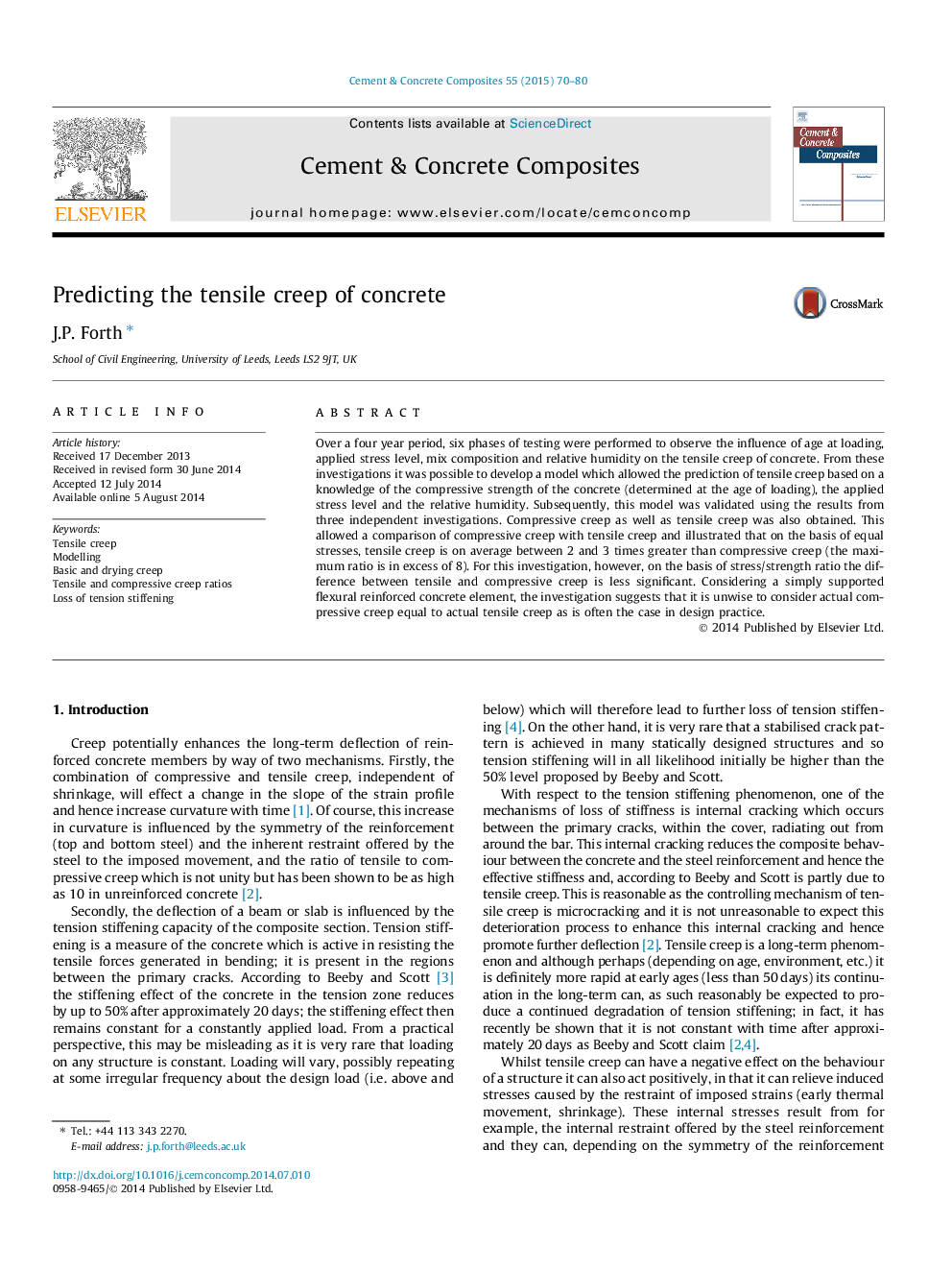| Article ID | Journal | Published Year | Pages | File Type |
|---|---|---|---|---|
| 7884141 | Cement and Concrete Composites | 2015 | 11 Pages |
Abstract
Over a four year period, six phases of testing were performed to observe the influence of age at loading, applied stress level, mix composition and relative humidity on the tensile creep of concrete. From these investigations it was possible to develop a model which allowed the prediction of tensile creep based on a knowledge of the compressive strength of the concrete (determined at the age of loading), the applied stress level and the relative humidity. Subsequently, this model was validated using the results from three independent investigations. Compressive creep as well as tensile creep was also obtained. This allowed a comparison of compressive creep with tensile creep and illustrated that on the basis of equal stresses, tensile creep is on average between 2 and 3 times greater than compressive creep (the maximum ratio is in excess of 8). For this investigation, however, on the basis of stress/strength ratio the difference between tensile and compressive creep is less significant. Considering a simply supported flexural reinforced concrete element, the investigation suggests that it is unwise to consider actual compressive creep equal to actual tensile creep as is often the case in design practice.
Keywords
Related Topics
Physical Sciences and Engineering
Engineering
Industrial and Manufacturing Engineering
Authors
J.P. Forth,
